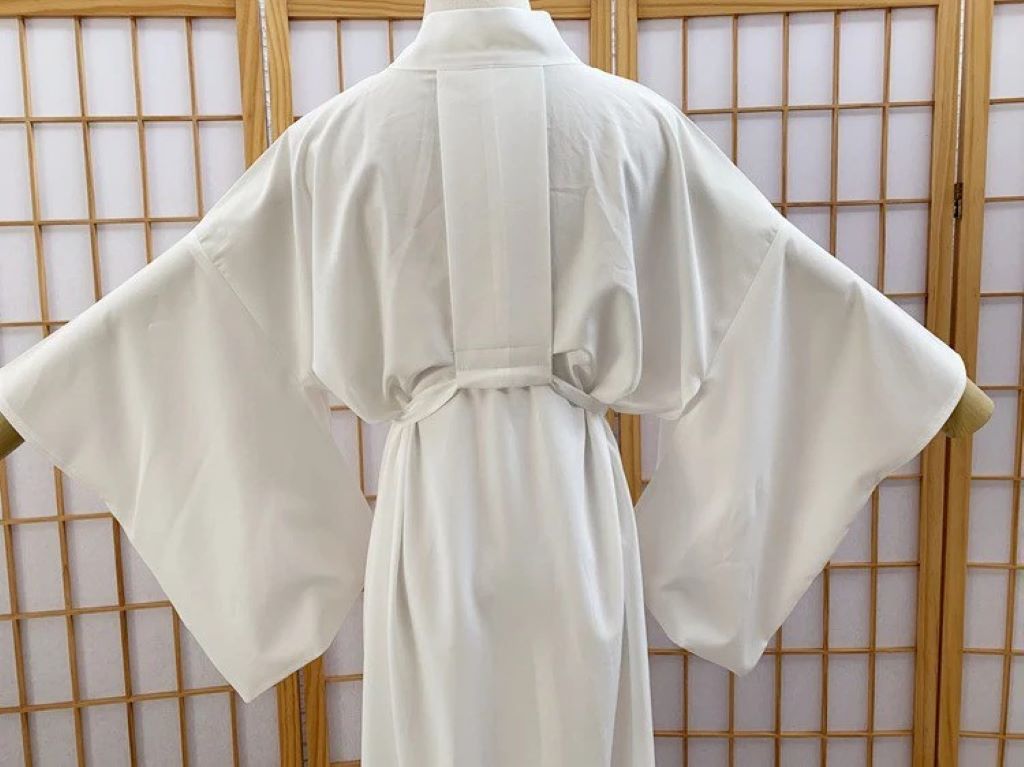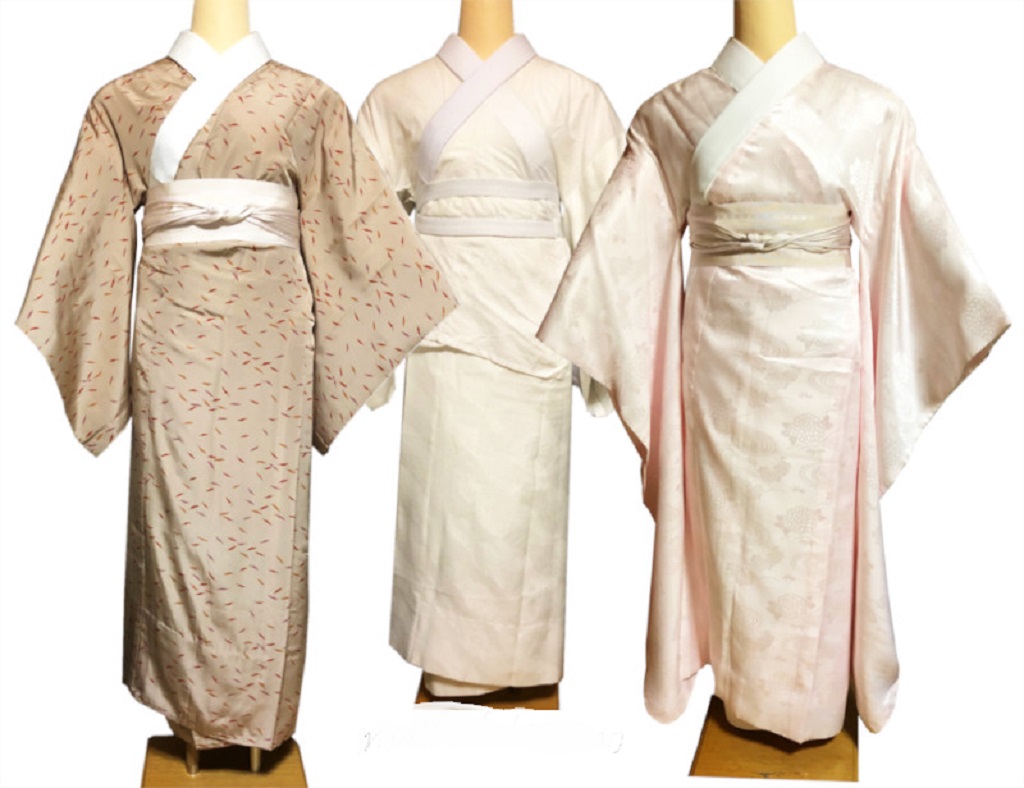
Dressing the Kuro Montsuki: A Guide to Traditional Japanese Formalwear
June 26, 2024
Do Polyester Shrink? A Comprehensive Guide to Understanding and Preventing Fabric Changes
July 3, 2024The world of kimono is rich in tradition and detail, and understanding the nuances of each garment adds a deeper appreciation for its beauty and functionality. When it comes to kimono undergarments, the hadajuban and nagajuban play distinct yet complementary roles. Let’s delve into the key differences between Hadajuban vs Nagajuban.
Table of Contents
ToggleHadajuban: The Foundation of Comfort and Protection

- Function: The hadajuban (肌襦袢), often simply referred to as “hada,” is the innermost layer worn directly against the skin. Its primary function is to protect the delicate fabrics of the outer kimono layers from sweat and oils while ensuring wearer comfort.
- Design: Hadajuban are typically simple in design, often resembling a short kimono top (hanjuban) or a sleeveless shirt. They can be full-length or half-length (han-juban), paired with a separate wrap skirt (susoyoke) for coverage. When dressing in traditional attire, choosing the right shoes for a yellow dress can enhance the overall look.
- Fabric: Due to their close contact with the skin, hadajuban are made from breathable, washable fabrics like cotton, linen, or silk. Modern options may include synthetic blends for easier care.
- Visibility: Hadajuban are not meant to be seen, serving as a hidden layer beneath the nagajuban and kimono.
Nagajuban: Enhancing the Kimono’s Silhouette and Elegance

- Function: The nagajuban (長襦袢) is the outer layer of kimono undergarments, serving as a bridge between the hadajuban and the kimono. It adds structure, enhances the kimono’s drape, and protects the outer layer from friction and wear.
- Design: Nagajuban are designed to resemble a full-length kimono, complete with sleeves and a collar. They can be lined (awase) for warmth or unlined (hitoe) for summer months.
- Fabric: Nagajuban are traditionally made from silk, but modern versions often use synthetic fabrics for easier maintenance. The fabric choice influences the nagajuban’s formality and seasonality.
- Visibility: A small portion of the nagajuban’s collar (eri) is visible at the neckline, adding a subtle decorative element.
Key Differences of Hadajuban vs Nagajuban: A Comparative Overview
| Feature | Hadajuban (Hada) | Nagajuban (Naga) |
| Layer | Innermost | Outermost of undergarments |
| Primary Function | Protection, comfort | Structure, aesthetics |
| Design | Simple, like a shirt | Full kimono style |
| Fabric | Cotton, linen, silk | Silk, synthetic |
| Visibility | Not visible | Collar visible |
| Formality | Casual | Varies with fabric choice |
Beyond the Basics: Additional Insights
- Customization: Both hadajuban and nagajuban can be customized to reflect personal preferences. Collar fabrics (eri) on nagajuban can be changed to match the occasion, and hadajuban can feature embroidered details for a touch of luxury.
- Historical Significance: Traditionally, both garments were made of silk. The shift to cotton for hadajuban and synthetics for nagajuban reflects modern lifestyles and practicality.
- Gender Differences: While the basic functions remain the same, men’s and women’s hadajuban and nagajuban may have slight variations in cut and design.
- Modern Adaptations: In contemporary kimono fashion, some wearers opt for simplified or alternative undergarments based on comfort and personal style.
Choosing Your Kimono Undergarments
Selecting the right hadajuban and nagajuban depends on several factors:
- Season: Opt for lined nagajuban in colder months and unlined in warmer months.
- Kimono Fabric: Choose undergarments that complement the weight and formality of your kimono.
- Personal Comfort: Prioritize breathable fabrics and designs that allow for ease of movement.
- Budget: Silk nagajuban can be expensive, but synthetic alternatives offer comparable aesthetics.
Caring for Your Kimono Undergarments
- Hadajuban: Follow the care instructions for the specific fabric. Most can be machine washed.
- Nagajuban: Dry cleaning is recommended for silk nagajuban, while synthetic versions may be hand-washable.
In Conclusion
Understanding the distinctions between hadajuban and nagajuban unlocks a deeper appreciation for the artistry and tradition of kimono attire. While seemingly simple undergarments, they play a vital role in comfort, aesthetics, and the preservation of these cherished garments.

